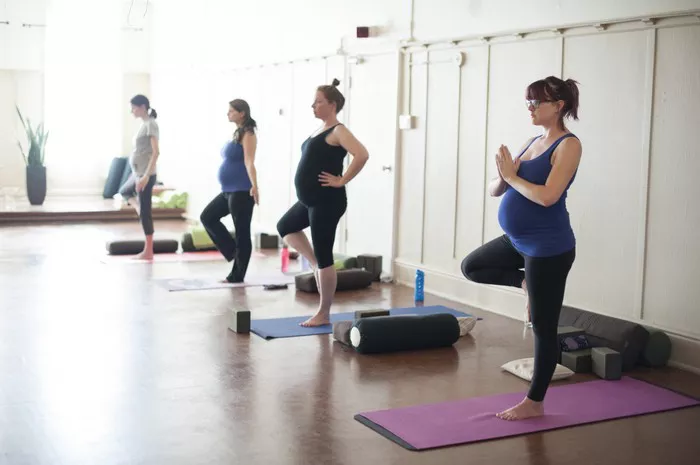Yoga is an ancient practice that has been embraced by many as a way to enhance physical and mental well-being. For pregnant women, yoga can be a valuable tool to prepare for labor and childbirth. This article will explore different types of yoga suitable during pregnancy, the safety of practicing yoga in various trimesters, and specific yoga techniques that can help with labor. Whether you are new to yoga or an experienced practitioner, this guide will provide helpful insights into how yoga can support your pregnancy journey.
Is It Safe to Do Yoga in the First Trimester?
The first trimester is a time of major changes in a woman’s body, and many expectant mothers wonder whether it is safe to continue or start yoga. The answer largely depends on your individual health and fitness level, but generally, gentle yoga practices are considered safe.
However, it’s essential to avoid intense poses or anything that puts pressure on the abdomen during the early stages of pregnancy. Listen to your body, and if you’re feeling fatigued, dizzy, or nauseous, opt for gentler poses such as cat-cow, child’s pose, or seated forward bends.
Third Trimester Yoga Stretches
In the third trimester, the body undergoes significant changes as it prepares for childbirth. Yoga during this time focuses on improving flexibility, reducing tension, and promoting relaxation. Some of the best yoga stretches for the third trimester include:
Seated Forward Bend (Paschimottanasana): This gentle stretch helps relieve back pain and encourages relaxation.
Cat-Cow Pose (Marjaryasana-Bitilasana): A great way to stretch the spine and alleviate lower back tension.
Wide-Legged Child’s Pose (Balasana): This pose opens up the hips, which is especially helpful in preparing for labor.
These gentle stretches can help improve posture, reduce discomfort, and prepare the body for the birthing process.
What Yoga Is Good for Pregnancy?
Not all yoga poses are suitable for pregnancy, but certain styles are particularly beneficial. Prenatal yoga is designed specifically for expectant mothers, focusing on poses that promote relaxation, breathing, and gentle stretching. Prenatal yoga classes are typically led by instructors who are trained in the safety and benefits of yoga during pregnancy.
Some of the most beneficial poses for pregnancy include:
Goddess Pose (Utkata Konasana): This powerful pose strengthens the legs and opens the hips, both of which are essential for labor.
Butterfly Pose (Baddha Konasana): This pose helps stretch the inner thighs and pelvic muscles.
Bridge Pose (Setu Bandhasana): A gentle backbend that can relieve tension in the lower back and strengthen the core.
How Often Should I Do Prenatal Yoga?
The frequency of prenatal yoga depends on your comfort level and stage of pregnancy. For most women, practicing yoga two to three times a week is ideal. However, some women may choose to do yoga daily if they find it relaxing and beneficial. It’s essential to listen to your body and not overdo it. Rest when needed, and make sure you’re hydrated and nourished before any session.
Goat Yoga
Goat yoga is a fun and unique form of yoga where participants practice yoga while goats roam around, occasionally interacting with them. This trend has gained popularity for its playful and stress-relieving qualities. While goat yoga is not specifically designed for pregnancy or labor preparation, it can be a fun, lighthearted way to relax during pregnancy.
What Is the Purpose of Goat Yoga?
Goat yoga aims to combine the benefits of traditional yoga with the playful and calming presence of goats. It’s often seen as a way to reduce stress and increase joy. The interaction with animals can help lift the spirits, making it a fun and relaxing experience. Although it might not replace more targeted prenatal yoga, goat yoga can still offer mental relaxation.
Is Goat Yoga Good for You?
Yes, goat yoga can be good for you, especially if you’re looking for a way to de-stress and experience something lighthearted. The goats provide a natural distraction, making it easier to let go of tension and enjoy the moment. Laughter, relaxation, and connecting with animals can also positively affect mental well-being.
Why Is Goat Yoga Important?
Goat yoga brings a playful and communal element to yoga practice, helping people connect with nature and animals. For pregnant women, participating in goat yoga may provide emotional benefits, helping reduce stress and anxiety, which are common during pregnancy.
Restorative Yoga: A Gentle Practice
Restorative yoga is a gentle form of yoga that involves holding poses for longer periods while using props for support. This type of yoga is particularly beneficial for pregnant women as it promotes relaxation, reduces stress, and helps with physical discomfort.
Restorative Yoga for Sciatica Pain
Sciatica pain, which is common during pregnancy, can be alleviated through restorative yoga. Poses such as Legs-Up-The-Wall (Viparita Karani) and Reclined Bound Angle Pose (Supta Baddha Konasana) help release tension in the lower back and relieve pressure on the sciatic nerve.
Online Restorative Yoga Training
Many online platforms offer restorative yoga training, allowing pregnant women to practice from the comfort of their homes. These classes often focus on gentle movements, relaxation techniques, and breathing exercises that are ideal for labor preparation.
Gentle Restorative Yoga
If you’re new to yoga or looking for a slower pace, gentle restorative yoga can be an excellent option during pregnancy. It focuses on relaxing the body and mind, which is essential as you approach labor.
Why Is Restorative Yoga Good for You?
Restorative yoga is good for you because it helps reduce stress, improve flexibility, and promote overall well-being. For pregnant women, restorative yoga can also help with insomnia, anxiety, and physical discomforts like back pain and muscle tension.
Kassandra Restorative Yoga
Yoga with Kassandra is a popular online platform where you can find restorative yoga classes, including pregnancy-friendly options. Kassandra’s classes are easy to follow and focus on relaxation, making them perfect for expectant mothers looking to prepare for labor.
CorePower Yoga: Building Strength
CorePower Yoga is a more intense style of yoga that focuses on building strength and flexibility. While this type of yoga may not be ideal for the later stages of pregnancy, some aspects, such as breathing exercises and core strength, can be helpful in the earlier trimesters.
Why Is CorePower Yoga Heated?
CorePower Yoga is often practiced in a heated environment to increase flexibility, help detoxify the body, and intensify the workout. However, during pregnancy, it’s important to avoid high heat as it can lead to overheating and dehydration. Pregnant women should consult their healthcare provider before engaging in any heated yoga.
Who Started CorePower Yoga?
CorePower Yoga was founded by Trevor Tice in 2002. The idea behind CorePower Yoga was to make yoga more accessible to everyone by offering a challenging, fitness-oriented style of yoga.
See also: What to Avoid During Early Pregnancy Yoga?
Power Yoga: A Dynamic Practice
Power yoga is a vigorous style of yoga that emphasizes strength, flexibility, and stamina. While power yoga can be an excellent workout, it is generally not recommended during the later stages of pregnancy due to its intensity.
Power Yoga Classes at Home
Many platforms offer power yoga classes that you can practice at home. However, pregnant women should be cautious with these classes and modify poses as needed, especially as they progress through their pregnancy.
Hot Power Yoga Calories Burned
Hot power yoga can burn between 300 to 600 calories per hour, depending on the intensity of the class. While it is an effective workout, pregnant women should avoid heated environments and focus on more gentle practices like prenatal or restorative yoga.
How Hot Is CorePower Yoga?
CorePower Yoga classes can reach temperatures of up to 105°F (40.5°C). This heat can intensify the workout, but it can be dangerous for pregnant women. It’s essential to opt for non-heated classes or consult with your instructor for modifications during pregnancy.
Conclusion
Yoga is a powerful tool for preparing both the body and mind for labor. Prenatal yoga focuses on gentle stretching, breathing, and relaxation, all of which are essential for a smoother birthing process. Goat yoga and restorative yoga offer fun and relaxing alternatives, while power yoga can build strength in the early stages of pregnancy. Always listen to your body, modify poses as needed, and consult your healthcare provider to ensure the safest and most beneficial yoga practice throughout your pregnancy.
Related topics:
What is the Prenatal Yoga Flow for the Second Trimester?
























